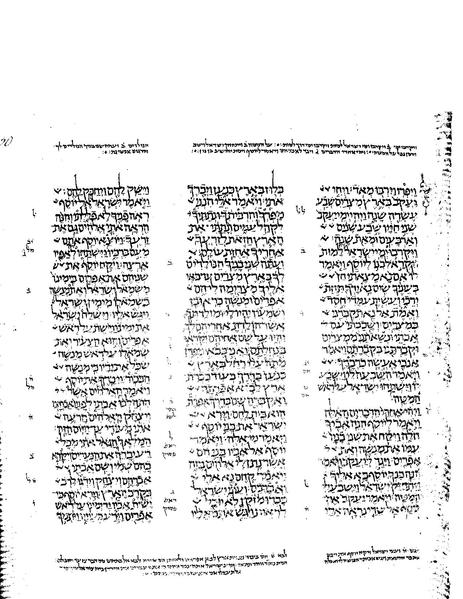See Rashi, who gives one, famous, explanation.
| And Jacob lived: Why is this section [completely] closed? Because, as soon as our father Jacob passed away, the eyes and the heart of Israel were “closed,” (i.e., it became “dark” for them) because of the misery of the slavery, for they (the Egyptians) commenced to subjugate them. Another explanation: That he (Jacob) attempted to reveal the End [of the exile] to his sons, but it was“closed off” (concealed) from him. [This appears] in Gen. Rabbah (91:1). | ויחי יעקב: למה פרשה זו סתומה, לפי שכיון שנפטר יעקב אבינו נסתמו עיניהם ולבם של ישראל מצרת השעבוד שהתחילו לשעבדם. דבר אחר שבקש לגלות את הקץ לבניו ונסתם ממנו: |
Ibn Caspi says that it for the same reason as the one he gave for parashat Vayeitzei being setuma.
הטעם והסבה בהיות זאת הפרשה סתומה כענין מה שכתבתי
:בפרשת ויצא יעקב
In Vayetzei, he wrote as follows:
ש(י) אנשי כנסת הגדולה שחלקו התורה לסדרים לשבועותהשנה, לא ראו מקום ראוי לעשות בו התחלת סדר כמו זה המקוםלסבות רבות, אין צריך פירוש, עם שמרם שיעור הסדרים שלאיהיה האחד ארוך מאד והאחד קצר מאד , כי לא מחכמהיהיה זה. אמנם היות זאת הפרשה סתומה, היה בעבור שהיה קשהבעיניהם לעשות בזה פרשה והפסקה, להיותו ביאור אל וילך פדנהארם שקדם זכרו, עם היותו הכרחי לעשות בזה פרשה. לכן אחזו בזהוגם מזה לא הניחו ידיהם, ומזגו הדבר מחובר שני הפכים ר"ל פרשהוסתומה , ובכלל כי כל ענין התורה הוא הקוי מציאותהשם בטבעי העולם :
"The Men of the Great Assembly (Anshei Knesset HaGedolah), who divided the Torah into sedarim for the weeks of the year, did not see a fitting place to make a beginning of the Seder such as in this place, for many reasons, this does not require explanation, together with their keeping in line with the proper length of the Sedarim so that one is extremely long and the other very long. For this [awkward sizings] would not be of wisdom.
Howbeit, that this parasha is setuma is because it was difficult in their eyes to make in this a parsha and break, since it [Vayeitzei Yaakov] is an explanation of 'and he went to Padan Aram' which was mentioned earlier. At the same time, it was necessary to make in this a parasha. Therefore, they seized this, and also from that did not hold back their hands, and thus the mixture contains the two opposites, namely, a parasha [break] and a setuma [closed, no parasha break]..."
If so, he maintains the same here in parashat Vayechi, that it was a continuation of the narrative, but that sidra length considerations played a role.
See my other posts on the subject of Vayechi and Vayeitzei being closed parshiyot. (Refer to the roundup posts, "posts so far for parashat X".) Interestingly, parsha usually means a segment from one petucha / setuma break to the next, or else approximately 1/3 of our usual sidra, since in Eretz Yisrael they had a three year (+) Torah completion cycle based on parshiyot whereas in Bavel they had a one year Torah completion cycle based on sidrot. This leads me to wonder at the parasha zo setuma language, and to have some reservations as to Ibn Caspi's position here. (One can readily modify this to speak of parshiyot rather than sidrot, of course.)
See also my discussion of Rashbam on this, that the beginning of the sidra was moved.


No comments:
Post a Comment